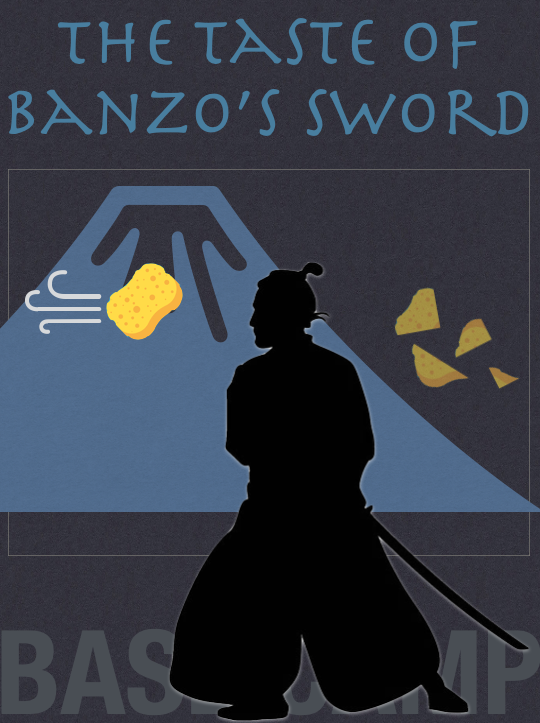Class Discussion of "The Shock of Shiva"
Below we take time to review the previous Class…
The Vijnana Bhairava begins with a simple yet profound question: Parvati asks Shiva, ‘which is the path we must tread to our enlightenment? There are so many, please clarify this process for our listeners.’
Shiva replies that this is indeed the question of questions, the ultimate question. (I personally wonder why this is the the question of questions— is this the fundamental challenge we all face when trying to meditate? Is this the same question as ‘am I doing this right?’ That haunts so many of us?) … (Text continues below)
Shiva first says that what he is about to say should be kept secret. (Why should it be a secret? In my experience, telling this to people who are not ready makes them angry, upset, or depressed. Unless you have put in the time to actually practice, you cannot comprehend anything beyond technique. This is giving a nickel when a nickel is asked for.) Shiva then states “pithily”, as Jai Deva Singh writes, that all techniques whether they divide or unites, (meaning no matter their method), are all bogus, without essence, delusion, even deceptive. They are expansion of Maya, illusion, and are like cities in the sky. This is the shocking answer of Shiva.
But why then do we have so many techniques, Parvati asks for the benefit of us all. Technique does serve a purpose, Shiva tells us. Technique focuses a scattered mind. Technique is good for people who can only think in terms of a to-do list, who are always ‘getting things done’. Also, rules and techniques help keep us out of trouble when we are young, when we are not capable of understanding a bigger picture. (My mind goes to the 10 commandments here).
And perhaps an even more important level of this discussion is that technique is not the problem, its the misuse of technique— when technique over shadows the goal itself. When technique becomes the goal it leads to imbalance. For example, the Guru Gita says that when our pranayama becomes “long and windy” it “brings disease” instead of heals disease. In this particular verse, the Gita recommends allowing the breath to be stilled by its own accord, naturally, which is to say, to use technique but also let it be natural. In Shiva Sutra 2.2 we see a similar point, Akrita, sincere effort, is defined as intense desire, but is also defined as completely natural and emanating from the center of the heart. Effort and technique are always kept in balance by our ability to let them go and dive into our natural experience.
The story of Banzo’s sword spoke to this point. In this story we saw that a young man wanted to become a swordsman, but was rebuked for having many of the previously stated qualities— he was a ‘doozer’, meaning that he expected that if he wanted to become a swordsman he simply should be able to do so when he chose to become it. He was picky about his growth, meaning that he wanted only to be a swordsman and thought there were no other paths that might support him in that regard. He was also in a hurry, saying that he thought it should be able to determine how long it would take if he worked hard enough. The more he insisted, the longer the teacher, Banzo, said it would take him. Eventually the student relented and said that he would learn in whatever method the teacher chose, and would take as long as the teacher told him.
So the student was put on dish duty, and worked in the garden. He greeted guests, set up the temple and closed it. Cleaned the chicken coop, watered the cacao. Helped with online marketing for teacher trainings, and weeded the bamboo. In short, he moved in to the ashram. After three years he started to worry that he would never learn how to wield a sword, and the next day, while doing the dishes, his teacher Banzo jumped out at him with a wooden sword and struck a hard blow. The student was caught off guard for sure. The next day, while taking out the trash, Banzo jumped out from a bush and smacked him again with the wooden sword. And from that day forward the student had to learn how to find his center in any and every activity so that he would not have to taste Banzo’s sword.
This student showed us that technique is not the problem, its the attachment to technique that is the problem, as Shiva told us. His teacher took all swordsman ‘techniques’ away from him, but in reality replaced it with many other techniques that the student would not get lost in— such as dish washing technique, and gardening techniques, etc. The student used these other techniques as they were meant to be used, to clean a dish and grow a garden, and so these techniques served him in many ways, as they serve us in the ashram. This class is one of those many techniques— philosophy can be a technique that serves you or a technique that binds you, as Shiva Sutra 1.2 states, Jnanam Bhanda. In this story, as in the ashram, the techniques of living a simple and positive lifestyle served him— they focused his busy mind, they relinquished his attachment to ‘doership’, and they kept him out of trouble long enough to grow.
So it seems that Shiva’s teachings are two fold, as so much of non-dualistic philosophy is— use technique, but don’t become bound by it. Ultimately, we are taught, Bhairava (our true nature), the path to self-realization, is not just a path of technique. That path is something else, something more. Technique is like the sugar coating on a medicine— it helps you take the medicine, but if taken alone is simply sugar, like junk food. We need technique to take the medicine of our growth, but technique itself is not the path.
So the question is asked here— how do you experience the difference between the sugar coating and the medicine in your practice? When you recite a mantra, gaze upon a murti, visualize your heart opening, balance your breathing with pranayama, or center your body through asana— how do you tell the difference between the sugar coating and the medicine?
And perhaps more importantly, how does knowing this difference serve your practice? Because to know the difference is to become the difference— ie. to know the sugar is to know the medicine. So how does this process, of differentiating technique from its goal, serve your practice?

